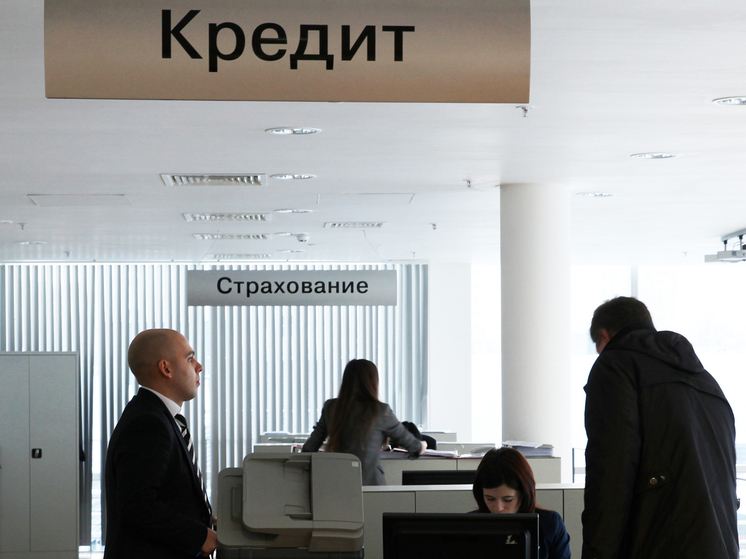Experts debated how this will affect the economy and the pockets of Russians
After the Central Bank of the Russian Federation raised its key rate at the end of July, Russian banks decided not to limit their appetites. Interest rates on consumer loans rose by an average of 2.2% in nine of the top 50 largest credit institutions in our country. MK found out from experts whether this threatens the economy with a debt crisis and how such a policy will affect the pockets of Russians.
 < span itemprop="height" itemscope itemtype="https://schema.org/QuantitativeValue">
< span itemprop="height" itemscope itemtype="https://schema.org/QuantitativeValue">
The decision to raise the key rate from 16% to 18% was made by the Central Bank of the Russian Federation on July 26. This is the highest rate since April 2022, when the rate was at 20% per annum. The head of the Bank of Russia, Elvira Nabiullina, emphasized that the high rate was a consequence of overheating demand, and not risks to financial stability.
The market was expecting the regulator's July decision, so its wards, commercial credit and financial institutions, began to gradually raise interest rates on loans even earlier than July 26. Well, by mid-August, in nine of the top fifty largest domestic banks, the cost of loans increased by an average of 2.2%. Now citizens can take out a loan at a minimum of 19% per annum (excluding insurance), and the maximum cost of a loan reaches 28%.
At the same time, the largest state-owned bank raised its forecast for retail lending growth by the end of the year to 12-14% on August 9, from the previously expected 9-11%. In other words, according to analysts, citizens will continue to take out loans. In the context of slowing economic growth, this could lead to problems, including a debt crisis. However, experts are in no hurry to dramatize the situation. According to Albert Koroev, Head of the Stock Market Experts Department at BCS World of Investments, the increase in rates, as well as other measures by the Central Bank of the Russian Federation, are intended to prevent excessive lending activity. According to statements by representatives of the regulator, since the end of 2022, the share of borrowers with a debt burden ratio (DBR) of more than 80% in terms of new issues has fallen almost threefold — to 13%. However, in the overall portfolio of banks, the share of such borrowers remains high. For example, the share of clients with a DBR of more than 50% is 56%. The Bank of Russia is increasing the premiums to risk coefficients for unsecured consumer loans from September 1, 2024, which should also have a positive effect on the lending market. «A debt crisis is not the danger that is now on the threshold,» continues the topic founder of the service «Credcheck» Elman Mekhtiev. «The Bank of Russia is deliberately limiting retail lending, and if the next tightening of macroprudential limits does not help with this, then there will be a further reduction in the permissible levels of DTI.» In addition, it is necessary to take into account that it is not 2020 and such mechanisms as credit holidays and out-of-court bankruptcy have long been tested and are working, the expert recalled.
The question of why Russians continue to take out loans despite high interest rates deserves special consideration. According to Freedom Finance Global analyst Vladimir Chernov, the fact is that the growth rate of wages and real incomes of the population is increasing at a noticeable rate. But there are also objective market effects. For example, car loans continue to be taken out even at high rates because the recycling fee will increase significantly from October 1, 2024, and the cost of all cars will increase sharply in price. The population is trying to manage to buy them at the previous cost, despite the high rates.
At the same time, the growth of lending also has a social change. According to Dmitry Yanin, Chairman of the Board of the International Confederation of Consumer Societies (ConfOP), the increase in interest rates on loans will reduce the amount of money that people spend on their daily expenses. “A survey that we conducted several years ago showed that most consumer loans are taken out to cover the basic needs of a family, including paying for housing and communal services, food,” explains the human rights activist. “And this was a bad trend. Also, the increase in interest rates on loans will lead to the fact that it will not be possible to re-borrow in order to pay off the previous debt and pay less interest in this case than before.” Most likely, a person will either be denied refinancing, or will begin to borrow at rates that will significantly exceed last year’s. This can be 25% or 30% per annum, and taking into account the imposed additional services, the rate can reach 45-50%. People apply even for such expensive loans because they may have nothing to live on, and they have no other options for paying off some mandatory current payments.
In the long term, an increase in interest rates on loans will lead to people spending less, starting to save on everything, and cutting back on their expenses. «There is an assumption that high rates contribute to an increase in the well-being of rich people who place money in deposits, and at the same time make life difficult for the poor, who are forced to live even worse, borrowing money from banks at high interest rates,» says investment advisor Yulia Kuznetsova. «That is why it is important to change your own life, increasing your income level, and not borrow money from banks and not spend it on anything, applying for a new loan.»


